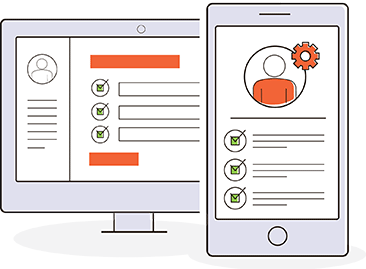Budgeting Process Overview | Steps and Strategy
The budgeting process is one of the most critical elements that can make or break a company.
Successful businesses rely on effective business planning by an owner or top executives. The budgeting process is one of the most critical elements that can make or break a company. It’s an ongoing endeavor that adapts as revenues and expenses fluctuate.
Because the budget planning process often gets complex, many companies have started relying on automated workflows developed in platforms like Integrify. Doing so helps improve an organization’s efficiency, reduces manual labor, and increases overall productivity.
What is a Budgeting Process?
The budgeting process is the series of steps organizations take to prepare and execute budgets for a specific period. For example, a sporting goods company may perform budgeting steps to determine how much they want to allot to produce footballs for the next year based on projected sales. A finance company may also use the budgeting process to cover their expected operating and non-operating expenses for the next quarter.
Companies typically look at past budgets to get a more accurate budgeting picture to see how well they worked out. Senior executives and managers involved in budgeting also assign specific amounts to spend on different expenses. A company’s budget is the final step in implementing a business plan.
Inaccuracies in any budgeting process steps can lead to cash flow problems. A company can’t survive if they don’t have enough money to cover its expenses. Therefore, organizations must do everything possible to enforce consistency and accuracy in budgeting.
What are the Stages in the Budgeting Process?
The entire budgeting process typically involves four distinct phases. When done correctly, your organization should accomplish the following goals:
- Create clear targets and expectations for expected costs and revenues.
- Set the stage for requesting additional funding from banks or outside investors.
- Outline global guidelines on how internal departments should establish priorities.
- Maintain expectations on what organizations can accomplish based on available funding.
- Keep the finance department connected with what's happening in the rest of the company.
- Provide executives and owners with visibility and control overspending.
Let's look at what's involved in each phase of the budgeting process.
Preparation
One of the most critical budgeting steps is reviewing your organization’s financial information. Some of the questions you should answer during your evaluation include:
- When you set past budgets, did you spend more or less than expected?
- Did you hit the growth targets forecasted for your last budget?
- Were there any barriers encountered that you didn’t expect?
- How difficult was it to enforce the budget?
If you work in a larger organization, asking for input from the budget managers of different business areas is a good idea. Let them provide you with answers to the same questions for that department. In addition, consult with team leaders to see how well the budget worked out and clarify where they may have run into issues throughout the last budget period.
Once you've gotten that input, start calculating the revenue you expect from the organization. First, identify all revenue streams and calculate your gross profit. For example, our sporting goods company should list all products produced, their cost, and how much volume they expect over the next year.
Other essential steps in this phase of the budget planning process include:
- Setting your fixed costs or overhead
- Accounting for variable expenses like marketing and corporate investments
- Establishing forecasts for any additional one-off spending like a merger
- Reviewing cash flow
Approval
Once you’ve established your budget parameters, it’s time to get through the budget approvalprocess. In many instances, internal political issues can make things more complicated. Going back to our sporting goods business example, let's say they have a budget committee established to make a final yes or no decision on your budget. In addition, there may be other executives designated to provide a sign-off. Make sure you address any questions that stakeholders may put forth in the preparation phase of the budget planning process.
An automated workflow can help speed up the approval process by providing a convenient and trackable way for all stakeholders to review and approve documents. That way, you can ensure you get the right signoffs at every approval process stage. In addition, you can establish contingency plans in alternative workflows if there’s a delay or the approver is unavailable. Finally, digital copies of approval signoffs allow you to create a clear data trail for future audits.
Execution
Once a budget receives final approval, it’s time to distribute funds allotted to various departments. That duty is typically the responsibility of a CFO or a company controller. Instead of relying on manual distributions, organizations can use Integrify workflows to automatically distribute funds to the correct business area. That cuts down on waste, helps budget owners keep track of unspent funds, or warns them if they’re in danger of overspending.
Evaluation
Automating budgeting process steps with workflows makes it easier for organizations to set up reporting. In addition, cutting down on manual data entry makes it easier to collect and record data on expenditures from the approved budget.
Organizations can integrate a workflow automation platform with an ERP system to extract additional data. That keeps data compliant when the time comes for an audit. The finance department can rely on a centralized data repository instead of accessing multiple platforms to pull together comprehensive reports.
Improve Your Budgeting Process with Integrify Automation
Integrify helps companies maintain cash flow and enable growth using automated workflows to manage various budgeting process steps. Learn more about how our platform helps simplify the budgeting process by setting up a software demo.
Interested in Automating Your Budgeting Workflow?
Check out our Automation Resources or schedule a demonstration.






